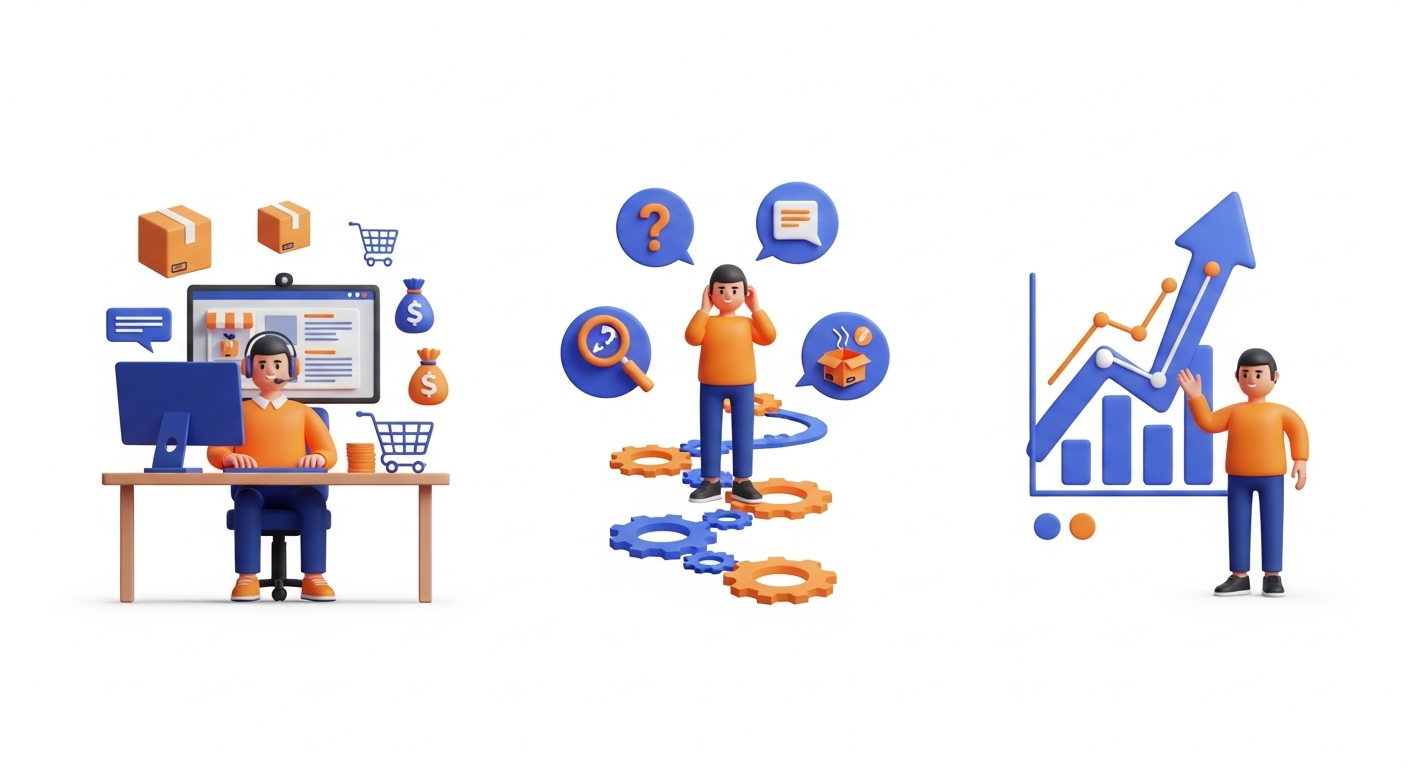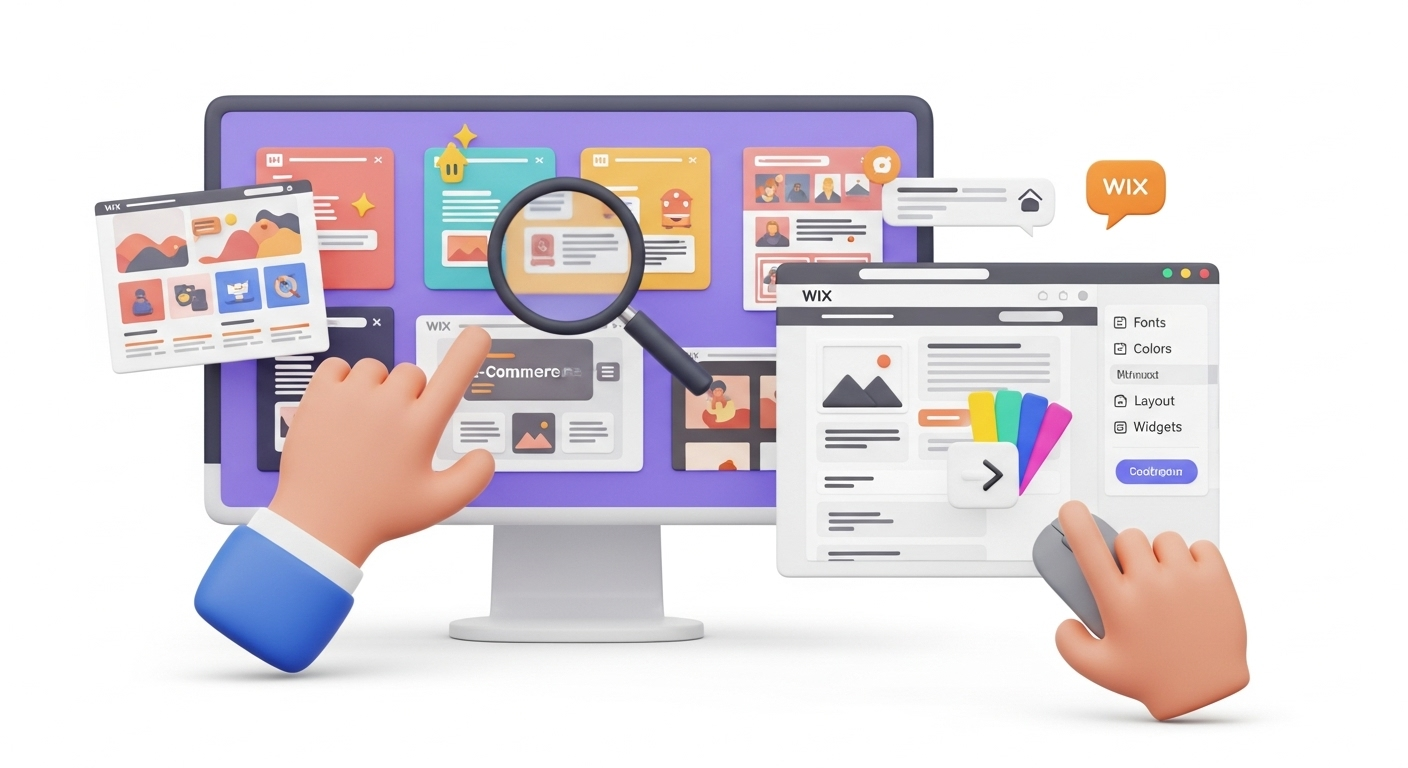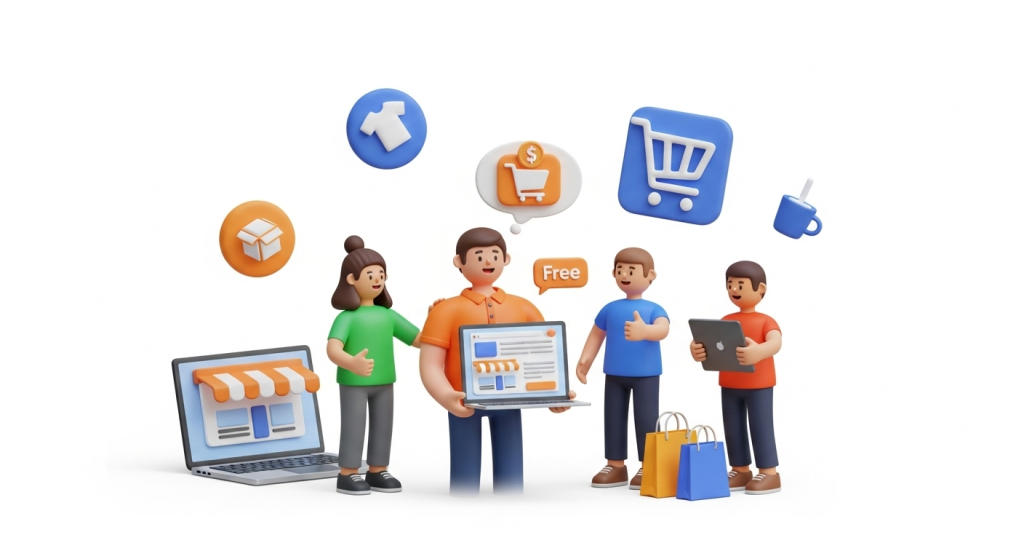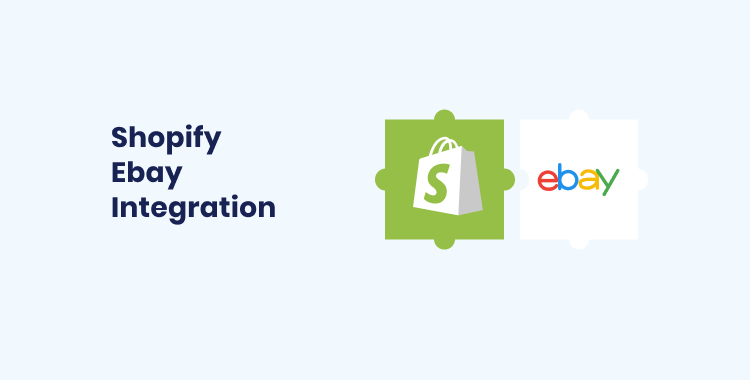
If you’re looking for reasons why a Shopify eBay integration is a must-have for your business, try over 130 million of them. That’s right. As of 2025, eBay has well over 130 million active buyers globally. With that level of global reach, your business' growth potential is virtually limitless. Here's the ultimate guide on integrating eBay into your Shopify account.
Table of Contents:
Shopify eBay Integration: Main Benefits
What can an eBay integration do for your Shopify store? The short answer is – a lot. Here are the top reasons why you might need it.
Gain Access to Millions of Active Buyers
You’ve set up your Shopify store, and you're now ready to showcase your products to the world. While that’s great and all, keep in mind that your online store has to stand out from the other countless websites on the internet. That’s where eBay comes in.
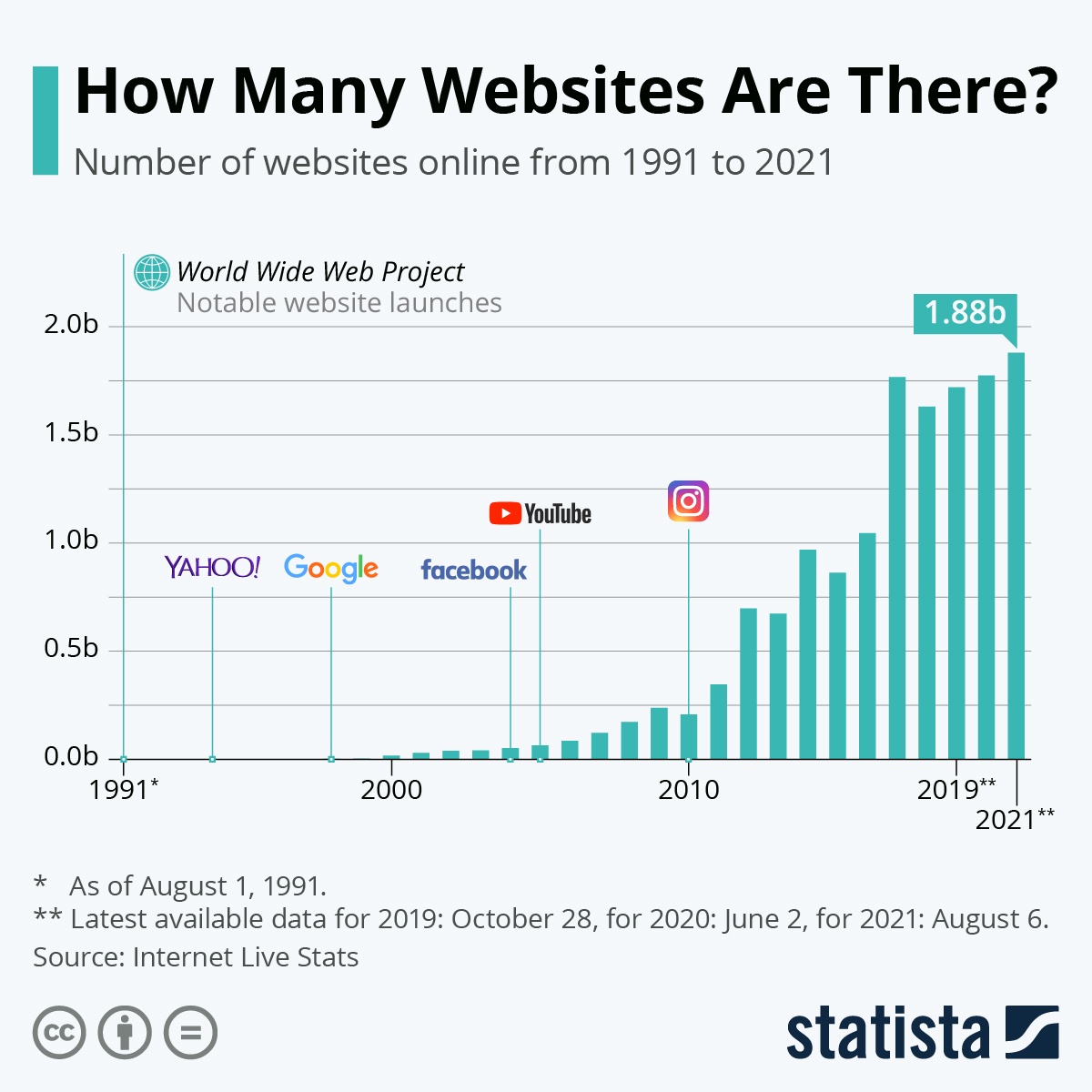 You will find more infographics at Statista
You will find more infographics at Statista
People may not have heard of your online store, but they’ve undoubtedly heard about eBay. By integrating your Shopify account with the platform, you would now be able to reach an audience spanning well over 130 million buyers shopping for products like yours.
The great thing about this model is – users on the eCommerce marketplace don’t need to search for your specific store to find the items they need. All they have to do is identify your product listing and then place an order for you to make a sale. It’s that easy.
Take a step forward towards your dream store with Cart2Cart! Take the chance to start the free demo migration and test the service in action.
Reach One-Stop-Shoppers
According to recent industry reports, a significant majority of online retail spending is derived from a handful of major online marketplaces. Here’s what that means.

Most online buyers hardly have the time (or patience) to hop from store to store, searching for the products they need. They are more likely to visit specific, well-known online marketplaces to shop. This phenomenon is what we refer to as "one-stop-shopping."
Integrating eBay allows you to reach buyers who only shop in one particular marketplace without cannibalizing your current Shopify sales. It’s a win-win either way.
Build Credibility
One of the first lessons you'll learn about the online retail world (if you haven’t already) is that building your brand goes hand in hand with building credibility. The more consumers trust your merchandise, the more they begin to associate your brand with top-tier quality. That's what eBay brings to the table.
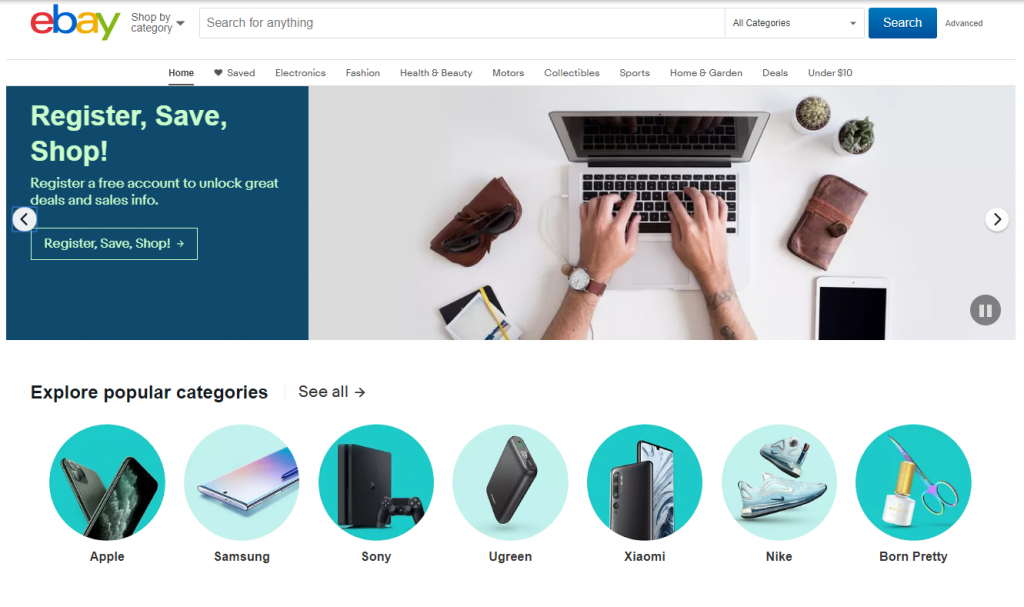
Top brands like Calvin Klein, Acer, Nintendo, Michael Kors, Nike, Adidas, and Victoria Secrets all use eBay to sell their products. Publishing your listings alongside theirs gives your brand the stamp of approval customers need to know that you're part of this elite group of established businesses. It tells customers that you’re all about providing value, regardless of where they find your products online. If you're considering a WooCommerce migration to Shopify, it’s worth noting that platforms like eBay can enhance the visibility and credibility of your brand, even during such transitions.
Focus on What Matters – Selling
Perhaps one of the most critical benefits you reap from a Shopify to eBay integration is the framework you now get to take full advantage of. We're talking – everything from the dedicated seller-protection program to the robust transaction monitoring system with automated detection.
Everything about eBay's policies, including robust transaction monitoring and seller protection programs, is designed to minimize your customer service costs and boost conversion rates, allowing you to focus on what matters – increasing your bottom line with the confidence of migration insurance.

How to Link Your Shopify Store and eBay Account
So far, we’ve looked at the different ways an eBay integration would benefit your business. Now, let’s explore how to do it – step-by-step.
1. Add an eBay Sales Channel
First off, you’ll need to have an eBay account before you can start the integration process. If you don’t already have an existing one, Shopify will prompt you to create a new one when adding it as a sales channel.
Once all that is in order, sign in to your Shopify account and then go to "Sales Channels" on the bottom-left section of the screen. Click on the "+" symbol to display the available sales channels.
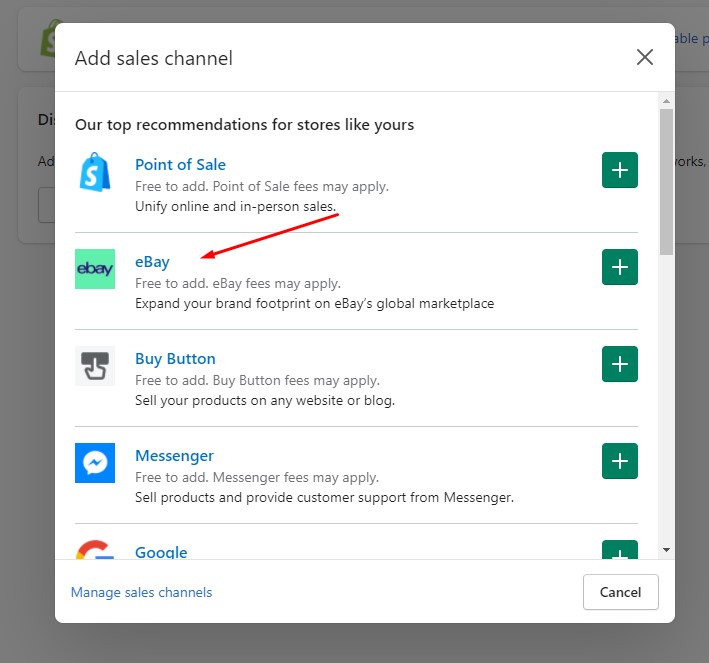
From the pop-up list displayed, select “eBay," then click on the "+" symbol beside it. This action activates eBay as a sales channel.
Pro tip: Ensure you grant the permissions required to publish eBay listing products. That way, you can start sending and receiving orders as soon as your account is all set up.
2. Connect eBay to Shopify
To do this, you'll need to select "Connect” to kick start the process. Next, you’ll see a prompt that requires you to allow eBay to access your Shopify account. To continue, select “Add sales channel.”
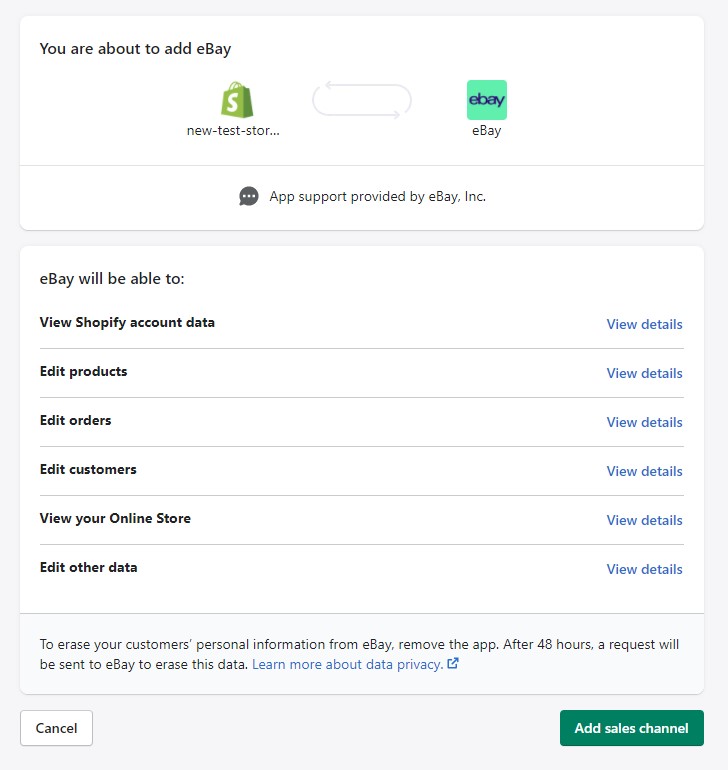
An eBay login pop-up window will then appear. Enter your eBay user ID and password to log in. Keep in mind that when you register a new eBay account or link to an existing one, you might be required to provide additional details about your enterprise.
These may include ownership information, details on inventory, or contact information. eBay may use these details to validate whether or not your business is legitimate.
Pro tip: If the eBay login dialog doesn’t appear, go “Site Settings” in your browser window and enable pop-ups and redirects for the website.
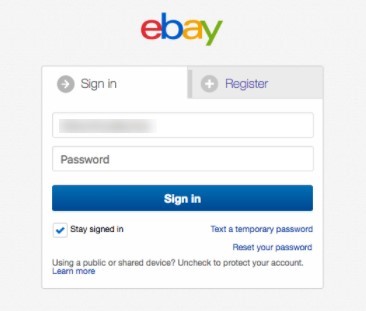
3. Configure Policies for Your Listings
This step requires you to configure several policy requirements for the listings you create via Shopify. To do this, follow the prompts provided and fill in the form with the requested information about your inventory settings, payment terms and taxes, shipping settings, and return settings. Click "Continue" to advance to the form that follows.
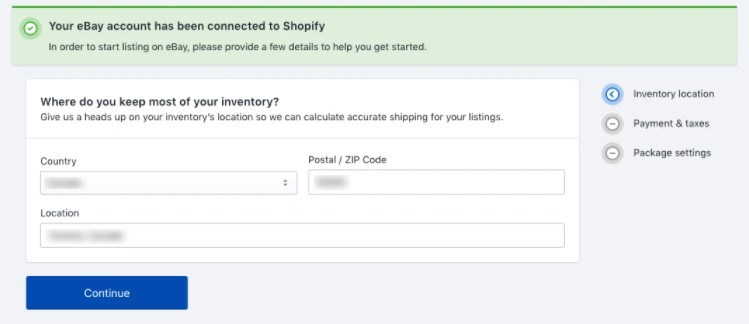
Once you’re through, you will be redirected to the channel overview page in your Shopify account.
Pro tip: eBay may suggest using the default policies in place of the custom ones you input. We recommend incorporating these suggestions as much as possible, as this guarantees the best path to success on the platform.
4. Select the Items to Publish
At this stage, you’ll have successfully linked your eBay account to your Shopify store. The next step involves publishing your Shopify products on the eBay platform. The products you post are called "listings.”

To create eBay listing items at a go, select "Review and publish all products." On the other hand, if listing a few of your Shopify merchandise on eBay is what you're after, select the “Choose individual products” option instead, then click “Save and publish” to proceed.
5. Refine and Publish eBay Listing Products
Finally, you’ll now be able to view a table with the listings you’ve selected to publish on eBay. Each cell in the rows and columns of the table is editable. Click inside the field and add whatever details you want.
Pro tip: Add keywords to the titles and descriptions of the listing to provide more information to customers and optimize your merchandise for search engine visibility.
The Ultimate Sales Roadmap
There you have it – the entrepreneur's guide to Shopify eBay sync. It's a no-brainer if you're looking to drive up sales in your business. Is your current cart working for your online business? If not, you might want to think about upgrading to a more sophisticated solution like Shopify.
Shopify eBay Integration - FAQs:
Does Shopify integrate with eBay?
Yes. By integrating with eBay, Shopify sellers can manage their business from one cloud-based interface. As a result of integrating your Shopify account with the eBay platform, you will now be able to reach well over 130 million buyers searching for products like yours. Additionally, if you're looking to expand your options, a Shopify to WooCommerce migration plugin can help streamline your business transition across platforms.
What are the steps to add eBay listing to Shopify?
Before you add eBay listing to Shopify, you need to: prepare your target store and then:
- install an eBay sales channel
- integrate eBay with Shopify
- set up policies for your listings
- choose the items you want to publish
- improve and publish your eBay listing products
Find instructions on how to do this in this detailed guide.
Use Cart2Cart for the stress-free, automated migration of all your customer, product, and order data in a few simple clicks. Sign up today for a free demo.
Monthly Update – December 2025
As we close out 2025 and head into the new year, a key focus for Shopify and eBay sellers should be leveraging advanced analytics for strategic growth. December's trend emphasizes deep diving into sales data across both platforms to identify high-performing products, understand seasonal demand shifts, and optimize pricing strategies. With the holiday shopping frenzy winding down, now is the opportune moment to analyze customer behavior patterns, popular search terms, and conversion funnels to refine your marketing campaigns for Q1 2026. Consider implementing cross-platform promotions that encourage repeat purchases and enhance customer lifetime value. Furthermore, review your inventory management, ensuring smooth post-holiday returns processing and efficient stock replenishment based on detailed sales forecasts. Embracing data-driven decisions in December 2025 will set a strong foundation for sustained success and adaptability in the evolving e-commerce landscape.
For more details, explore our FAQ section or schedule a call with a migration expert.

